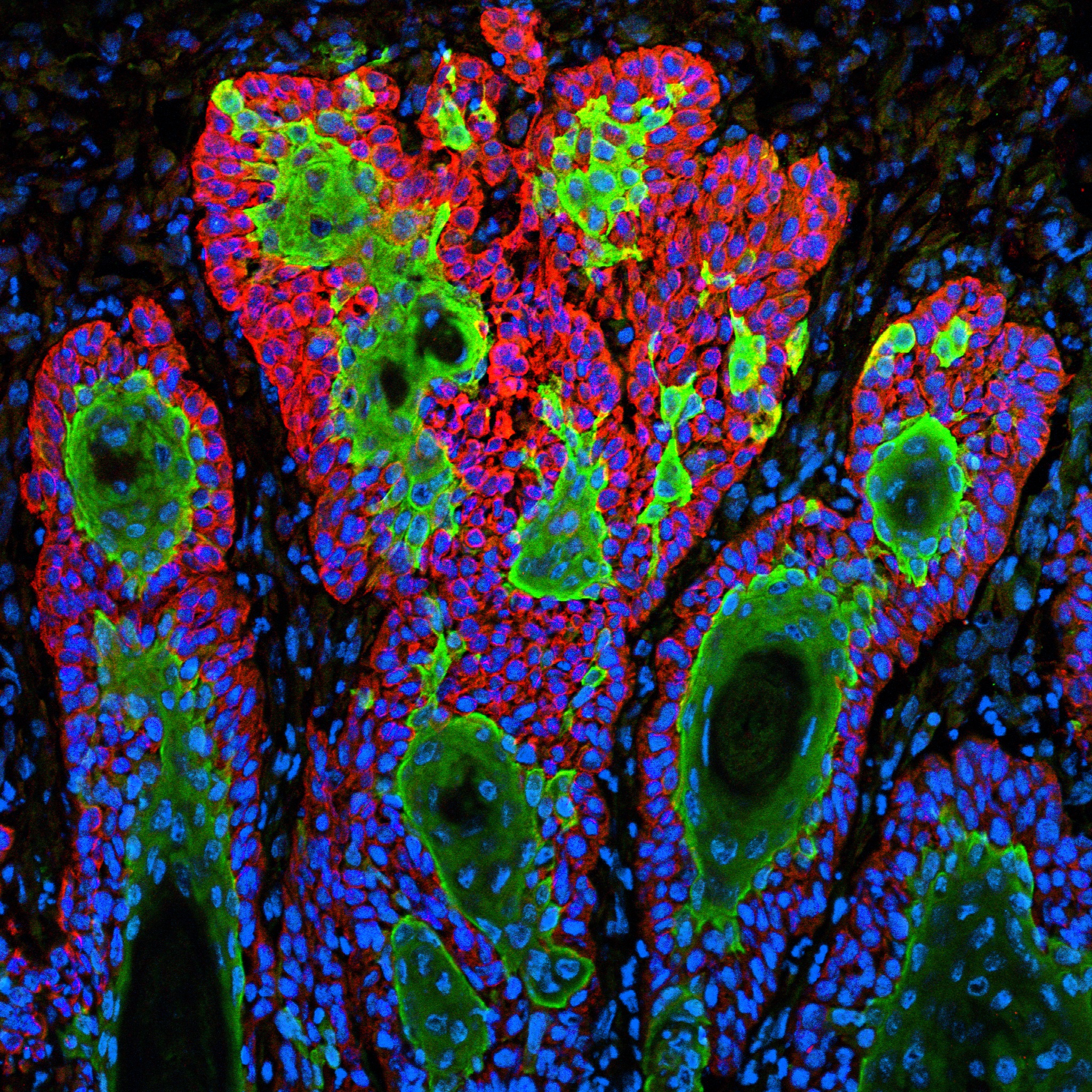Snapshots of Life: Portrait of Skin Cancer
Posted on by Dr. Francis Collins

Caption: This image shows the uncontrolled growth of cells in squamous cell carcinoma.
Credit: Markus Schober and Elaine Fuchs, The Rockefeller University, New York
For Markus Schober, science is more inspiring when the images are beautiful, even when the subject is not. So, when this biologist was at The Rockefeller University in New York and peered through his microscope at squamous cell carcinoma (SCC), both the diabolical complexity—and the beauty—of this common form of skin cancer caught his eye.
Schober wasn’t the only one who found the image compelling. A panel of judges from the National Institute of General Medical Sciences and the American Society for Cell Biology chose to feature it in their Life: Magnified exhibit, which recently opened at the Washington Dulles International Airport.
As gorgeous as the micrograph may be, it has meaning beyond its artistic merit. It illustrates in vivid detail the biomedical puzzle that Schober, now an NIH-funded researcher at New York University’s Langone Medical Center, is trying to crack: is there any way to turn SCC—the second most common form of skin cancer among Caucasians—from a potentially fatal disease into a harmless condition? [1]
So, let’s take a closer look at this sample of tumor tissue from a mouse. Actively dividing skin cancer cells (red) are seen invading healthy tissue as they grow. As these malignant cells spread, they leave other skin cells (green) in their wake [2]. The blue dots in the image are nuclei of all cell types—the cells that are neither red nor green are blood vessels, fibroblasts, immune cells, and other cells that make up the “stroma” of the skin.
Schober hypothesizes that if he can find a drug that can limit the ability of malignant cells to self-renew and can accelerate their differentiation into benign cells, the tumor will stop growing and eventually disappear. While such a result wouldn’t look that great (all the cells would be green), I’d definitely take a cure for this type of skin cancer over even the prettiest of pictures!
In the meantime, if you notice any unusual spot on your skin that is changing over time, especially if it is darkly pigmented, I urge you to see your doctor. Most skin cancers, including SCC, are treatable if caught early. Also, keep in mind that the best way to prevent skin cancer is to reduce your exposure to the sun’s DNA-damaging ultraviolet radiation—by seeking shade, wearing clothing that covers your skin, and/or frequently applying sunscreen.
References:
[1] Cutaneous squamous-cell carcinoma. Alam M, Ratner D. N Engl J Med. 2001 Mar 29;344(13):975-83.
[2] Tumor-initiating stem cells of squamous cell carcinomas and their control by TGF-β and integrin/focal adhesion kinase (FAK) signaling. Schober M, Fuchs E. Proc Natl Acad Sci U S A. 2011 Jun 28;108 (26):10544-9.
Links:
Skin Cancer (NIH/National Cancer Institute [NCI])
How to Protect Your Skin from Sunlight (NIH/NCI)
Markus Schober, New York University School of Medicine
Dulles Airport Shows Beautiful Images of Mouse Brain and Zebra Fish Embryo, Scientific American
Arts Program, Metropolitan Washington Airports Authority
NIH support: National Institute of General Medical Sciences; National Institute of Arthritis and Musculoskeletal and Skin Diseases; National Cancer Institute

Great post today!
I could understand lot of things thanks to the image and excellent explanation in the article.Thanks a lot, Dr. Francis…